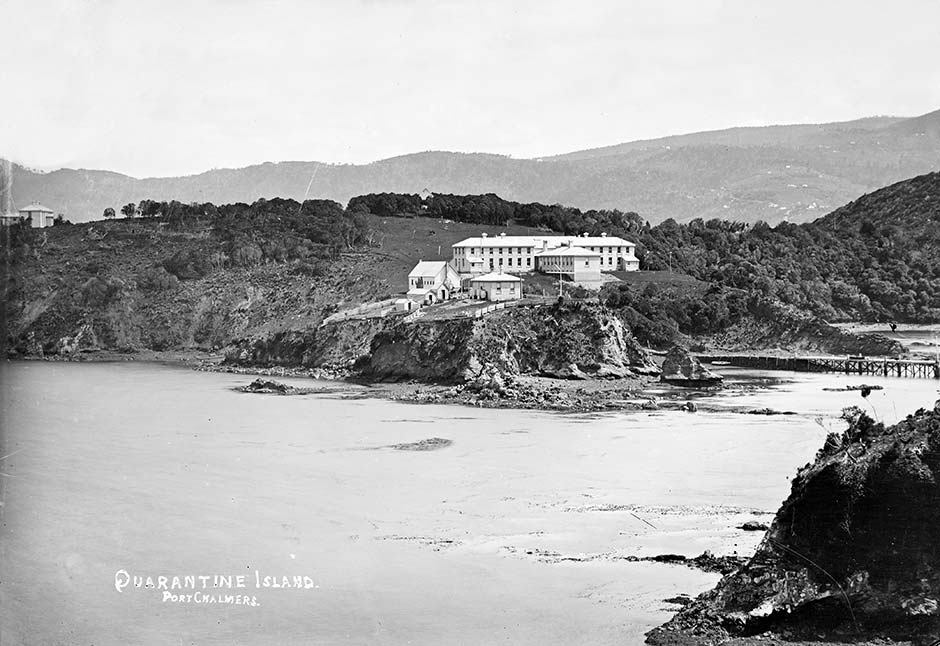
In the 19th century, rigorous measures were taken to stop people disembarking in New Zealand with infectious diseases. Most diseases burned themselves out during a three- to four-month passage to New Zealand aboard an emigrant ship, because sick passengers generally either recovered or died. But time could not inoculate against every disease, especially if migrant ships touched at ports nearer to New Zealand. Parents, reluctant to break up their families, sometimes disguised symptoms. Some of them had become sick in their barracks while waiting to board ship.
As the migrant trade grew, the major ports built quarantine stations on harbour islands such as Quarantine Island in Otago Harbour (above). Threats to human health declined rapidly as the century progressed, with rising British living standards, tighter screening and better ships helping to reduce health threats. Once at sea, from the mid-1890s a new generation of big, modern steamships offered migrants more space, better food – and fewer rats and roaches. In 1940 the government decommissioned the last of the quarantine islands.

Community contributions